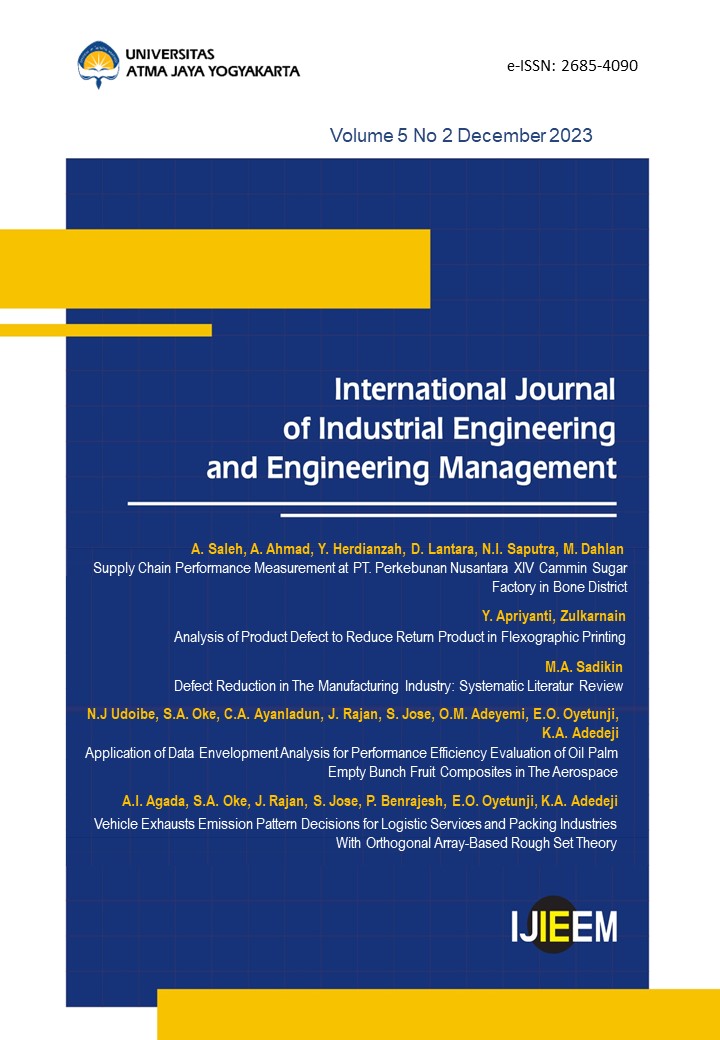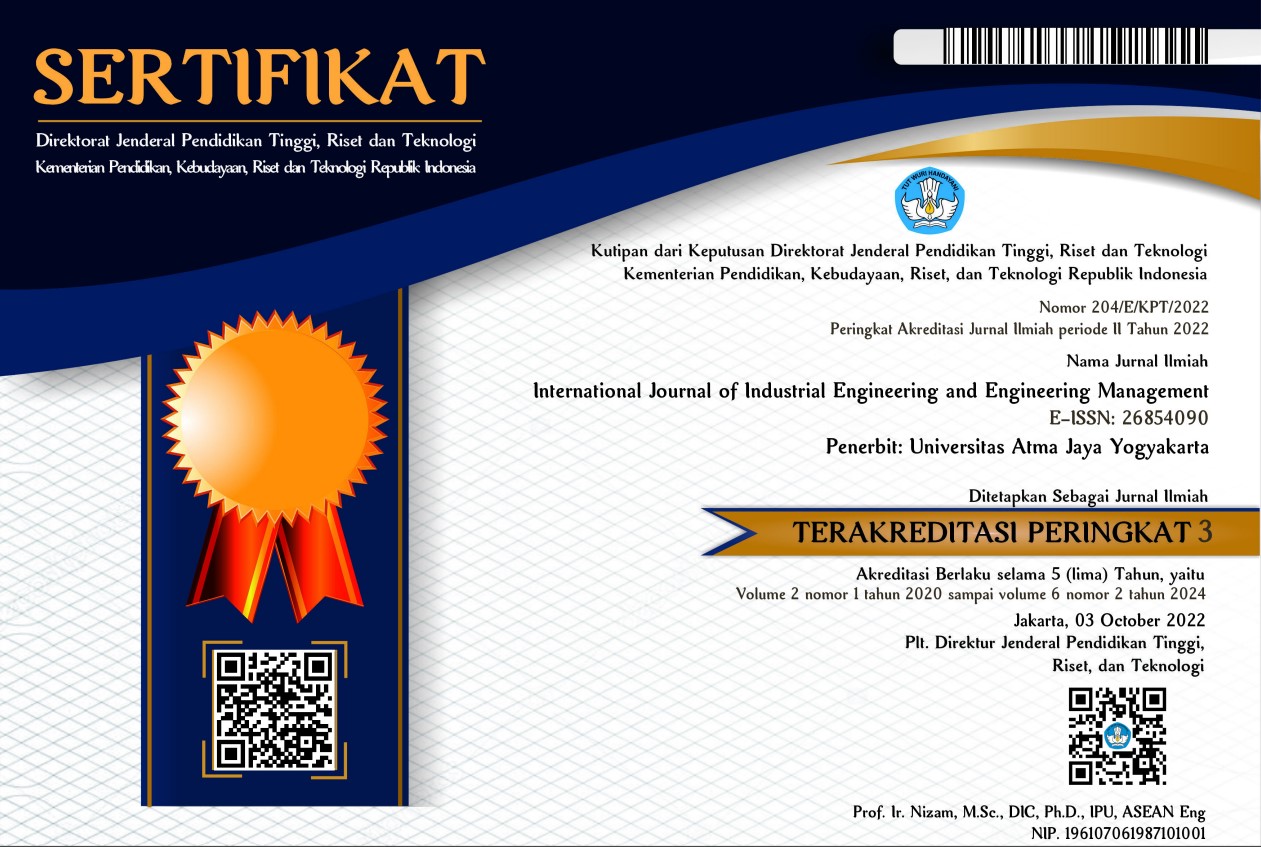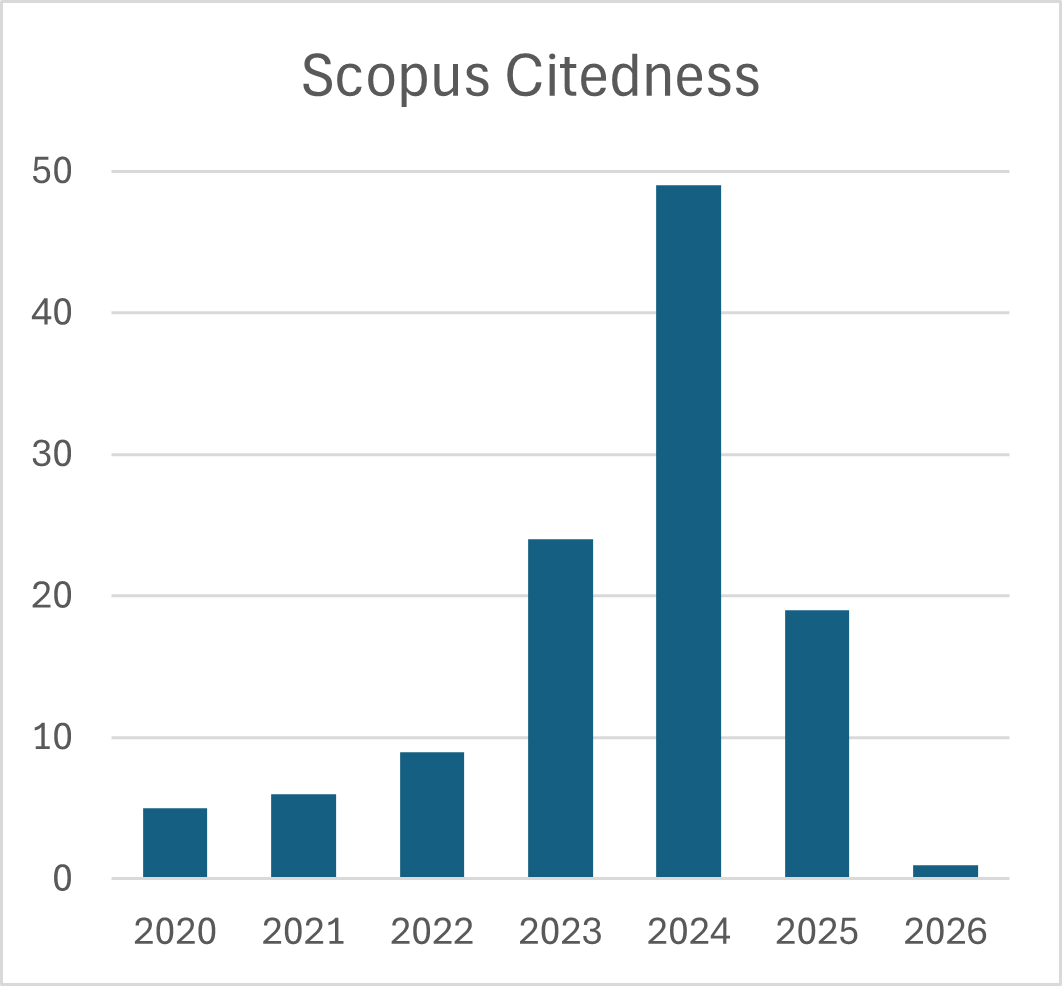Analysis of Product Defect to Reduce Return Product in Flexographic Printing
DOI:
https://doi.org/10.24002/ijieem.v5i2.6244Keywords:
defects, quality control, Failure Mode Effect Analysis (FMEA), Problem Identification Corrective Action (PICA)Abstract
Product return in 2021 at PT XY increased, but the quality control implemented has not been running effectively. This
study aims to analyze the failure risk that causes defects, gets the greatest failure risk in the Risk Priority Number (RPN),
and gives suggestions for improvement for the next production. The focus of this study is on production defects that are
returned by customers. This study used Failure Mode Effect Analysis (FMEA) methods and Problem Identification
Corrective Action (PICA) table. From the gathered data, it is identified that there is one type of dominant defect that is
outside the control limits. The results of data processing by multiplying the SOD value to get the RPN value found that
the three largest ranking modes of failure were the engine settings did not match the RPN value of 484, negligent in the
production control process with the RPN value is 230, and the compressor is not optimal with the RPN value is 210.
Then an analysis was carried out using the PICA table to get suggestions for improvements, conducting periodic IK
retraining, checking machine condition regularly, conducting periodic inspections during the production process,
evaluating performance results, and running check sheets while carrying out the production process.
References
Anderson, B., & Fagerhaug, T. (2006). Root cause analysis simplified tools and techniques. ASQ Quality Press: USA.
Anjalee, J. A. L., Rutter, V., & Samaranayake, N. R. (2021). Application of failure mode and effects analysis (FMEA) to improve medication safety in the dispensing process – A study at a teaching hospital, Sri Lanka. BMC Public Health, 21(1), 1430.
Attaqwa, Y., Hamidiyah, A., & Ekoanindyo, F. A. (2021). Product quality control analysis with statistical process control (SPC) method in weaving section (case study PT. I). International Journal of Computer And Information System (IJCIS), 2(3), 86–92.
Bangun, C. S. (2022). Application of SPC and FMEA methods to reduce the level of hollow product defects. Jurnal Teknik Industri:, 8(1), 12-16.
Cahyono, B., Sumarsono, Hendriana, D., Baskoro, G., & Nasution, H. (2022). TQM Implementation In An Indonesian Remanufacturing Company With A Long-Term Relationship With Customer Satisfaction And Business Performance: 3rd International Conference On Business And Management Of Technology (ICONBMT 2021), Surabaya, Indonesia.
Chen, K. S., Wang, C. C., Wang, C. H., & Huang, C. F. (2010). Application of RPN analysis to parameter optimization of passive components. Microelectronics Reliability, 50(12), 2012–2019.
Grace, E., Girsang, R.M., Simatupang, S., Candra, V., & Sidabutar, N. (2021). Product quality and customer satisfaction and their effect on consumer loyalty. International Journal of Social Science, 1(2), 69–78.
Gupta, R. (2023). Failure mode and effects analysis of PCB for quality control process. MAPAN, 38(2), 547–556.
Hayashi, P., Abib, G., & Hoppen, N. (2019). Validity in qualitative research: A processual approach. The Qualitative Report (TQR), 24(1), 98-112.
Imaningsih, E. S. (2018). The model of product quality, promotion, price, and purchase decisions. Jurnal Ekonomi, 23(2), 260-271.
Kaplan, R. M., & Saccuzzo, D. P. (2018). Psychological testing: Principles, applications, and issues (9th Ed.). Cengage Learning: USA.
Nurwulan, N. R., & Veronica, W. A. (2020). Implementation of failure mode and effect analysis and fault tree qnalysis in paper mill: A case study. Jurnal Rekayasa Sistem Industri, 9(3), 171–176.
Sahu, A. R. (2020). Failure mode, effects and criticality analysis of dragline components and evaluation of risk priority number for effective maintenance planning. Journal of Mines Metals and Fuels, 68(5), 166-172.
Siregar, K., & Siregar, S. F. (2018). Analysis Of Causes Of Defects Gloves And Bar Soap Using Failure Mode And Effect Analysis (FMEA) In XYZ Company. IOP Conference Series: Materials Science And Engineering, 288, 012089.
Sürücü, L., & Maslakçi, A. (2020). Validity and reliability in quantitative research. Business & Management Studies: An International Journal, 8(3), 2694–2726.
Tang, L.L., Chen, S.-H., & Lin, C.-C. (2020). Integrating FMEA and the Kano Model to improve the service quality of logistics centers. Processes, 9(1), Article 51.
Wang, W., Song, J., Chen, J., Wei, T., & Ning, J. (2022). Service design touch point failure model and effect analysis based on the triangular fuzzy number evaluation method. International Journal On Interactive Design And Manufacturing, 16(2), 517–530.
Wulandari, R. S., Hakim, L., & Haris, R. F. (2022). Analysis of product defects in the packing production pocess at PT.XYZ using FTA and FMEA methods. (JKIE) Journal Knowledge Industrial Engineering, 9(1), 52-60.
Würtenberger, J., Kloberdanz, H., Lotz, J., & von Ahsen, A. (2014). Application of the FMEA during the product development process – Dependencies between level of information and quality of result. Design Methods, 417-426.
Yulianto, A. T., & Wahyuni, H. C. (2021). Minimize customer return by using the method of quality control circle and quality loss fuction: Study from PT Artha Food. PROZIMA (Productivity, Optimization And Manufacturing System Engineering), 3(1), 43–56.
Downloads
Published
How to Cite
Issue
Section
License
Copyright (c) 2024 Yunita Apriyanti, Zulkarnain

This work is licensed under a Creative Commons Attribution 4.0 International License.








